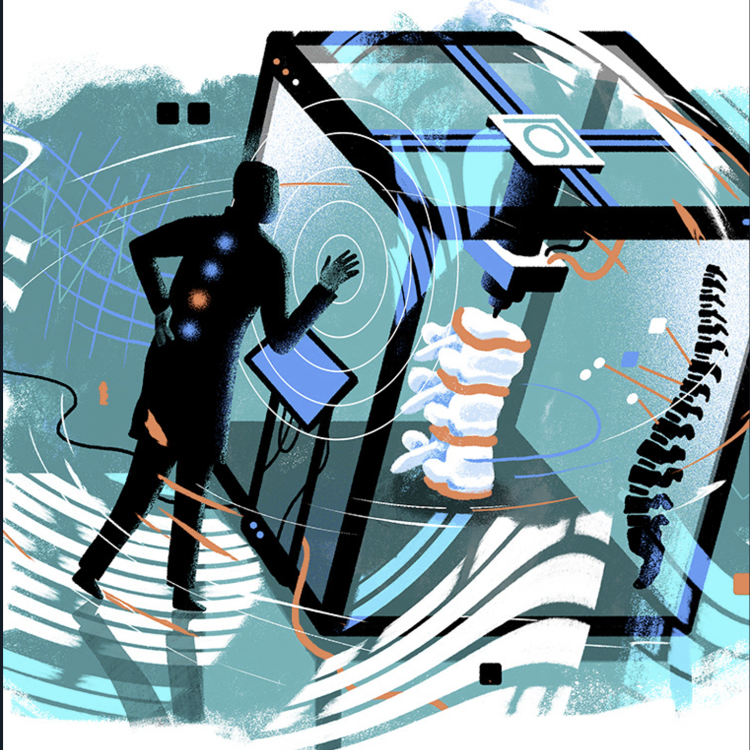Rodent behavioural testing is the study of the neural mechanisms underlying emotions [1]. It is used in the study of almost all mental conditions, including PTSD [2], OCD [3] and autism [4]. For example, to measure anxiety, researchers may place a rodent in a large tub, record a top-down video and measure the time spent near the safety of walls [2]. These videos also contain rich information about behavioural patterns, but scoring this manually is time consuming.
Research projects in Information Technology
Displaying 31 - 40 of 186 projects.
Combating antimicrobial resistance through use of artificial intelligence and genomics
Antimicrobial resistance (AMR) is one of the most significant and immediate threats to health in Australia and globally. We are working on harnessing new technologies such as artificial intelligence and next-generation sequencing and to improve the diagnosis, treatment and prevention of AMR infections.
The specific aims of this project are:
1. Rapidly identify AMR and predict treatment responses through use of genomics and machine learning in a clinical context.
Active Learning for Language and Multimodal Applications
This PhD project aims to mitigate the data scarcity of new NLP and Multimodal applications by developing novel active learning algorithms. In this project, the student will leverage large foundation models, such as ChatGPT and GPT4, incorporating the cutting-edge techniques in the other areas, such as reinforcement learning, causality and GFlowNets, to devise novel active learning algorithms for NLP and multimodal applications.
Event Extraction and Neuro-Symbolic Reasoning for Law Enforcement and Legal Applications
In recent years, social media have become a common plattforms for criminals to stalk, intimidate, manipulate and abuse vulnerable citizens, such as women and youth. A recent survey of students in grades 6 to 9 found that the rates of electronic bullying for girls were between 16% and 19%, whereas the rates for boys were between 11% and 19%. 33.47% of sexually abused girls reported experiencing cyberbullying compared to 17.75% of nonsexually abused girls.
Privacy-Enhancing Technologies for the Social Good
Privacy-Enhancing Technologies (PETs) are a set of cryptographic tools that allow information processing in a privacy-respecting manner. As an example, imagine we have a user, say Alice, who wants to get a service from a service provider, say SerPro. To provide the service, SerPro requests Alice's private information such as a copy of her passport to validate her identity. In a traditional setting, Alice has no choice but to give away her highly sensitive information.
Medical AI Exploration with Machine Learning and Robotics
PhD Studentship Description:
Human-in-the-loop AI for Microgrid Management (position filled)
Project description
Microgrids aggregate distributed energy resources, bringing energy security to customers, from individual residences to businesses. Microgrids can contribute to net-zero transition to mitigate climate change in the energy sector by integrating renewables, storage, and consumer energy resources, such as demand-responsive loads.
Optimal design of electric bus fleet and charging stations
One of the main roadblocks to widespread electric buses is the charging of their batteries. Charging an electric battery takes substantially longer than filling up a petrol tank: 30-60 minutes with a fast charger, up to hours with a slow one. The drawback of fast chargers is that they are more costly and that it only takes a few of them to generate a substantial load on the current grid. This means that, compared to petrol buses, some changes might need to be introduced in how electric buses are operated.
Situation Reasoning in IoT environments
Situation-awareness is the key to enabling intelligent IoT applications. Situation reasoning is used to aggregate multiple contextual information from physical and social sensors using reasoning methods, and convert them into useful high-level knowledge, i.e. situational intelligence.
Disentangled Representation Learning for Synthetic Data Generation and Privacy Protection
Synthetic data generation has drawn growing attention due to the lack of training data in many application domains. It is useful for privacy-concerned applications, e.g. digital health applications based on electronic medical records. It is also attractive for novel applications, e.g. multimodal applications in meta-verse, which have little data for training and evaluation. This project focuses on synthetic data generation for audio and the corresponding multimodal applications, such as mental health chatbots and digital assistants for negotiations.



